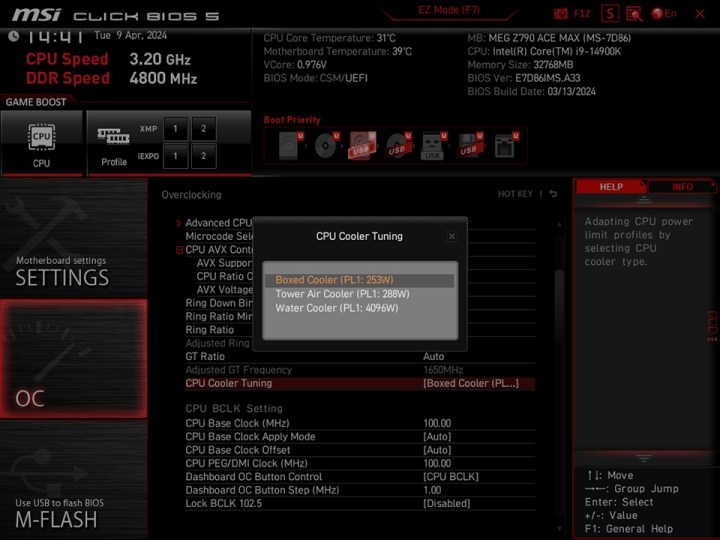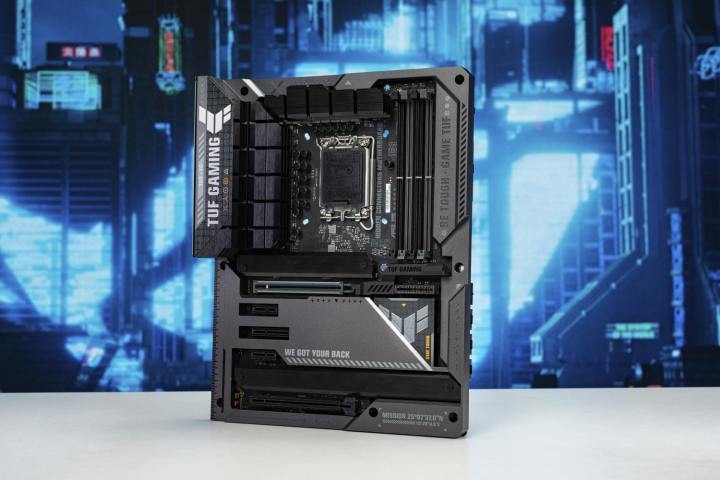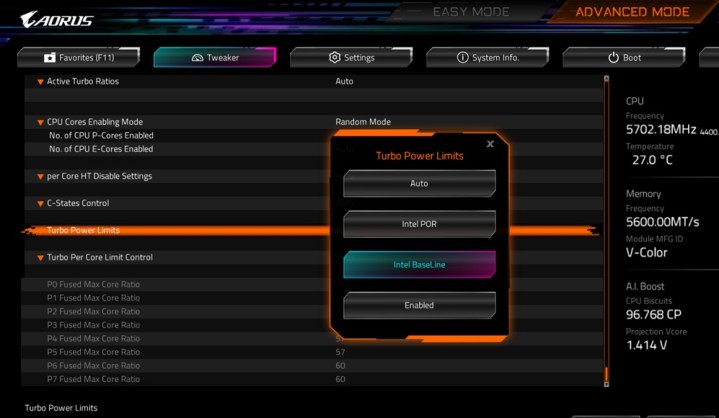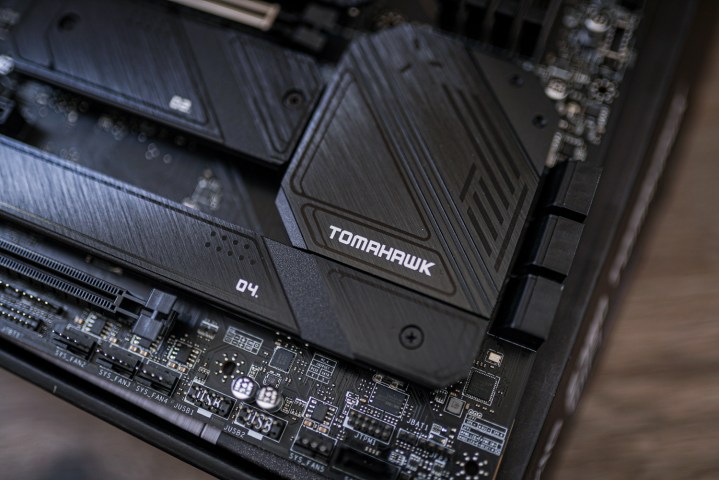Despite being among the best processors you can buy, some high-end Intel CPUs have faced a wave of instability over the past few months. Intel is investigating the problem, but the company and its motherboard partners have already worked toward some temporary fixes to improve stability on high-end Intel CPUs — even if it comes at a performance cost.
Before getting into the fixes, keep in mind that they are temporary. Intel will release a statement on the instability soon, likely with more direct guidance on what affected users should do. In addition, the scope of the problem isn’t clear — if you’re not experiencing issues, you shouldn’t have anything to worry about.
Who’s affected

It’s not entirely clear how widespread the issue with Intel instability is, but there are a few common threads. First, the main processors affected are the Core i9-13900K and Core i9-14900K. There are some reports that the Core i7-13700K and Core i7-14700K are affected, too, but those are few and far between. For now, the problem seems solely focused on Intel’s most recent and most powerful CPUs.

Get your weekly teardown of the tech behind PC gaming
The issues come up mainly when playing games. Oodle, a decompression technology used in PC games, attributes the problem to “overly optimistic BIOS settings” and says affected users will see problems not only in games, but also “standard benchmark and stress test programs.” In games, the crash may show up as an “out of memory” error, despite the fact that the failure is related to the processor.
If you have one of these processors and aren’t experiencing issues, you don’t have anything to worry about at this point. That could change as Intel releases official guidance, but it appears that only a select number of high-end Intel CPUs exhibit this behavior. The fixes here are meant for users encountering instability.
For MSI motherboards

If you have an MSI Z790 motherboard, you should follow MSI’s guidance to restore default settings within your motherboard’s BIOS. Unlike some other motherboard vendors, which we’ll get to shortly, MSI hasn’t released a BIOS update addressing the instability yet. Instead, it says some settings already available in the BIOS will fix the issue.
For starters, open the BIOS by hitting the Delete key on your keyboard while your PC is booting. Head to the overclocking section and look for the CPU cooler tuning setting. Change this to Boxed cooler, which will turn the power limit down to Intel’s specification of 253 watts.
After, find the CPU lite load control in the same overclocking menu and change it from Normal to Intel default. MSI notes that the default settings may increase voltage to the CPU, and changing these settings may reduce performance. It should fix instability in the meantime, however.
For Asus motherboards

Asus has released a BIOS update for its Z790 motherboards that adds the Intel Baseline Profile. This adjusts a handful of settings in the BIOS, should you enable it, which should improve stability at the cost of some performance. To download the BIOS update, visit Asus’ website and search for your motherboard model. Download the latest BIOS update and follow our guide on how to update your BIOS.
Once you’ve updated your BIOS, you can find the Intel Baseline Profile option under the Ai Tweaker section. After you’ve enabled the setting, your PC will reboot and apply the changes. According to some early testing of this profile, your CPU could see upward of a 9% drop in performance. Thankfully, that performance drop isn’t present in most games.
There is a way to improve stability without a drop in performance, at least according to system builder Falcon Northwest. The company exclusively uses Asus motherboards for its PCs, and it says you can improve stability with a set of BIOS adjustments, which you can see below.
4/23 UPDATE: Our 1st-pass testing of ASUS' new BIOS' with "Intel Baseline Profile" shows they will cripple performance unnecessarily for many K-CPUs. Should fix instability though.
We still recommend our 4/18 BIOS guidance for now.
More details on what IBP BIOS' affects below👇 pic.twitter.com/wnXPQ63NzG— Falcon Northwest (@FalconNW) April 23, 2024
Although the promise of improved stability without a drop in performance is enticing, you’ll need to adjust some settings that are buried within the BIOS. If you’re not comfortable doing so, it’s best sticking with the Intel Baseline Profile for now.
For Gigabyte motherboards

Similar to Asus, Gigabyte has also released BIOS updates for its Z790 and B760 motherboards. You’ll need to install this new BIOS if you want to access the Intel Baseline Profile. Although it carries the same name as the profile found with Asus motherboards, Gigabyte’s adjustments are different — and that affects performance quite a bit.
First, download the beta BIOS and flash it to your motherboard. Once finished, enter the BIOS and go to Advanced mode. Under the Tweaker tab, expand Advanced CPU settings and find the Turbo power limits option. You’ll want to turn this to Intel BaseLine.
The major difference with Gigabyte is that it changes the power limits. Under Intel’s specification, the Core i9-14900K has a PL2 of 253 watts. PL2 is the maximum short-term power draw for the processor. Gigabyte, however, limits the PL2 to 188W. According to testing from TechSpot, this has a much more significant impact on performance than Asus’ Baseline Profile.
For ASRock motherboards
Rounding out the major motherboard vendors is ASRock, which just released a BIOS update for its B760 motherboards that enables the Intel Baseline Profile. At the time of writing, ASRock just posted these updates, and there aren’t currently updates for Z790 motherboards (though, be sure to check depending on when you’re reading this).
It’s not clear what ASRock defines as the baseline profile — I don’t have an ASRock motherboard on hand to test. But if you have a B760 motherboard from ASRock, you can download the beta BIOS and enable the setting now.
A temporary solution

For now, all of the BIOS updates we’re seeing are temporary solutions. Intel has said it will make a public statement on the instability in May, so it’s possible we could see more direct guidance from Intel itself at that time. Hopefully by then all of the motherboard vendors will be on the same page about what exactly “baseline” means.
In the short term, you’ll either need to deal with instability or sacrifice some performance, the latter of which will vary depending on your motherboard brand. The good news is that the instability is mostly focused around games, and from what we’ve seen, the performance impact in games in relatively small.
Editors’ Recommendations

